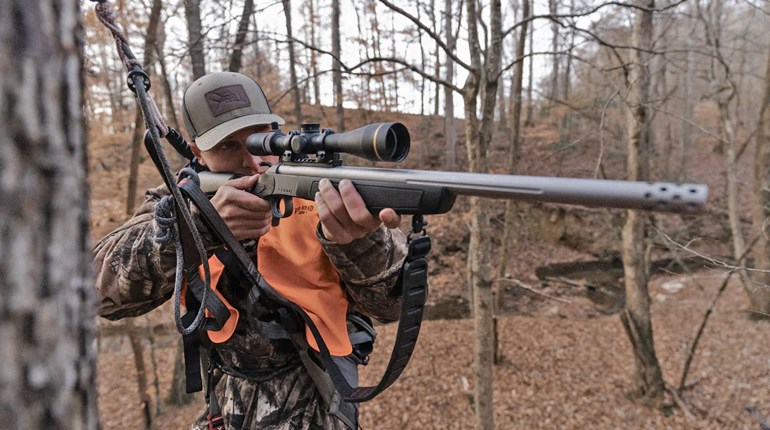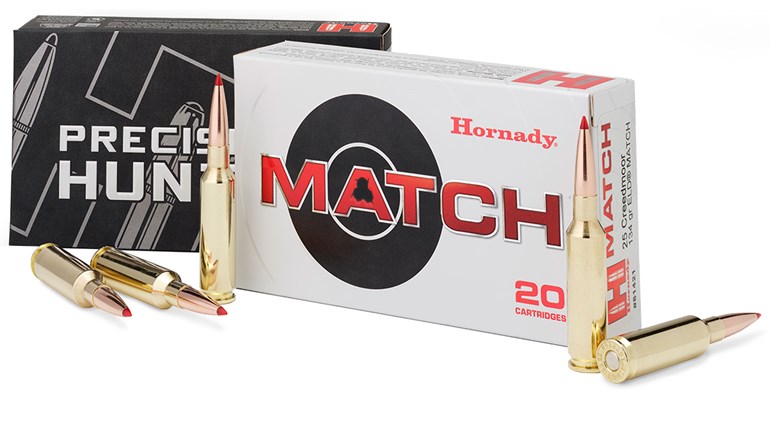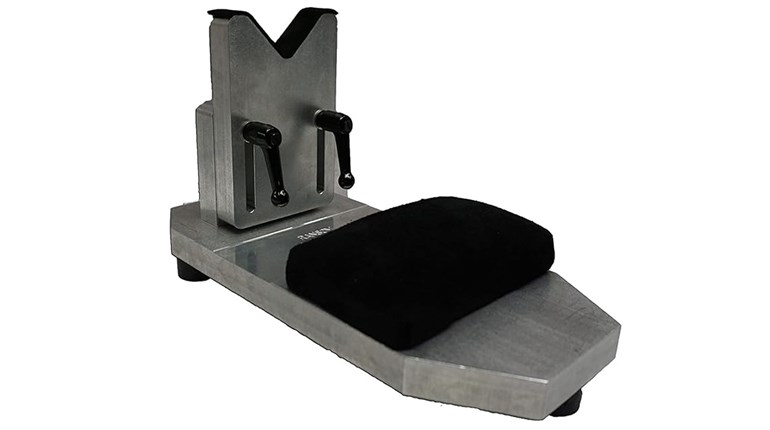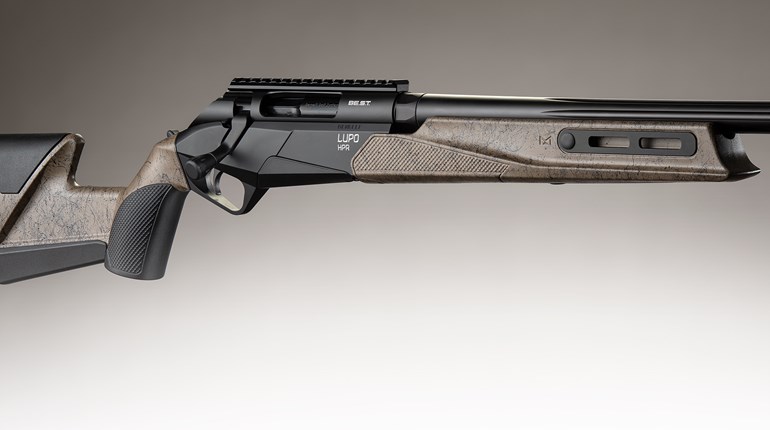
Hornady’s new 7 mm PRC might be the new hotness in long-range precision cartridges, and it comes to market based on the collective knowledge gained from developing previous offerings.
Over the last few years, we’ve seen several new cartridges introduced. Federal brought out its 30 Super Carry, Hornady unveiled the 7 mm PRC and Remington launched its 360 Buckhammer. You may or may not be interested in any of these, and I’m sure some folks do not understand why they even exist. I’m also sure that the average gun owner really has no idea what all is involved in the introduction of a new cartridge. The process is a lot more involved than you might imagine.
Just like those who make cell phones, ammunition manufacturers are engaged in innovation. If they weren’t, we’d all be shooting .30-30 Win. carbines and .45 Colt single-action revolvers. New cartridges are conceived and developed because shooters have been asking for them or because there’s a void in the marketplace. We may not have needed the 6.5 Creedmoor, which essentially duplicates the .260 Rem., but it started the trend of stipulating faster rifling twists. This requires new cartridges like the 6.5 PRC, 6.8 Western and 7 mm PRC, because if ammo makers just loaded higher BC bullets into old cartridges—like the .264 Win. Mag., .270 WSM and 7 mm Rem. Mag.—extant rifles would not stabilize them.
The 30 Super Carry is a perfect example of a cartridge for which shooters were asking, but asking for indirectly. Recent interest in concealed carry vaulted compact semi-auto pistols to a level of never-seen-before demand. And, shooters wanted them to be as small as possible, as powerful as possible and with capacities as great as possible. For the most part, we’d reached the pinnacle of that criteria with ultra-compact 9 mm handguns. Engineers at Federal set out to increase the capacity of an ultra-compact pistol without negatively impacting terminal performance. The 30 Super Carry was the result.
Similar consumer demand also drove Remington to develop the 360 Buckhammer. There are a lot of hunters in states that require straight-wall cartridges for deer hunting. Remington realized that while there were several options, a low-recoiling lever-gun cartridge—more powerful than the .357 Mag.—did not exist. Working with Henry, it developed the 360 Buckhammer.
The 7 mm PRC came about due to different but similar demand. Though very similar to the 7 mm Rem. Mag., it can handle higher BC bullets, which shoot flatter and drift less in the wind. This is something that makes long-range shooters giddy.
What might surprise you is that the creation of a new cartridge does not happen quickly. In most cases, it takes between two to four years. This might seem odd to those familiar with wildcatting cartridges, which is a process than can be completed from start to finish in a couple of months. There are several reasons why it takes so long. It starts with a concept that is then evaluated from a practical and financial standpoint—will it sell and how much will it cost to create? Then, testing begins, and in the case of hunting and self-defense cartridges, the primary focus is on terminal performance.
And then manufacturers must figure out how to build it. With the 30 Super Carry, engineers first cut down a .30 Carbine case for testing, but they soon realized they would need to create a new case entirely. With the 360 Buckhammer and the 7 mm PRC, Remington and Hornady had parent cases—the .30-30 Win. and 300 PRC, respectively—from which they could work.
Because of the .35 Rem. and other 7 mm cartridges, Remington and Hornady knew that, ballistically, its new cartridges would work, but with the 30 Super Carry, Federal had to perform some additional testing. First, Federal attempted to discover if it could achieve 12 to 18 inches of penetration with a bullet upset of at least 1.5 times original diameter, and if it could create a bullet that would deliver this performance after passing through heavy clothing.
With proof-of-concept established, the ammo maker then needs to find a partner; a wonderful new cartridge is worthless without guns to fire it. In the case of the 30 Super Carry, Federal worked with Nighthawk Custom and Smith & Wesson. And, as mentioned with the 360 Buckhammer, Remington worked with Henry. Hornady had several partners for the 7 mm PRC. These partnerships require some choreography, because the guns need to be released at the same time as the cartridge. So, what began as a project to create a new cartridge now also involves the creation of a new firearm or firearms built by a separate company or companies. This requires a lot of back and forth as guns and ammo are tested for safety and reliability.
Also, once the design is mostly finalized, designers often reach out to industry professionals to get feedback. Federal contacted me when it was developing the 30 Super Carry almost two years before it was introduced. I, and I’m sure others as well, signed non-disclosure agreements and gave Federal our opinions.
Furthermore, the process is not just about crafting a cartridge. Precise tooling must be designed and built to create ammunition in mass quantities, packaging needs to be designed and made and a marketing plan must be established so that the world will
not only be introduced to the new cartridge, but also one that helps the world understand it.
There’s another reason we’re seeing new cartridges. Improvements in metallurgy and firearm and ammo design allow modern cartridges to safely operate at higher pressures. The 7 mm PRC is loaded to 65,000 psi, but the 7 mm Rem. Mag. is only loaded to 62,000 psi. The 30 Super Carry is loaded to 52,000 psi, and unlike the 35,000 psi 9 mm, it also uses a small rifle primer. The 360 Buckhammer has a maximum average pressure (MAP) rating of 50,000 psi and the older .35 Rem. it ballistically replicates is only loaded to 33,500 psi. One can’t just start loading older cartridges to higher pressures, because they would be dangerous in the guns designed to handle only the original pressures.
While some new cartridges may not interest you, all this research and development is how we move forward. Eventually, lessons learned will give us better cartridges, ammo and guns. The short and wide-bodied .30 Rem. AR didn’t make it, but the similarly configured 224 Valkyrie is a fantastic AR cartridge. You don’t like the 30 Super Carry or the 7 mm PRC? Well, just wait and see what comes next.
Because it takes time, there’s also some risk associated with new-cartridge development. Imagine if legislation changes and certain firearms can no longer be owned. Imagine if the states requiring straight-wall cartridges suddenly allow any rifle cartridge. Or, what if a competitor introduces a similar cartridge that has a better design or one that is nearly identical, but comes out six months before or at a lower price? There’s a lot of competition in ammo development, and security around the projects is “TOP SECRET” tight. Lots of money goes into R&D, and no company wants that to end up as a loss.
I think there was some spying going on prior to 1955. Winchester introduced its .243 Win. with a 1:10-inch twist about when Remington introduced its .244 Rem. with a 1:12-inch twist. The .243 Win. became one of the most popular rifle cartridges of all time, and the .244 Rem. withered and died. Maybe there’s an opportunity out there for some work in ballistic espionage. Just don’t get caught.





































